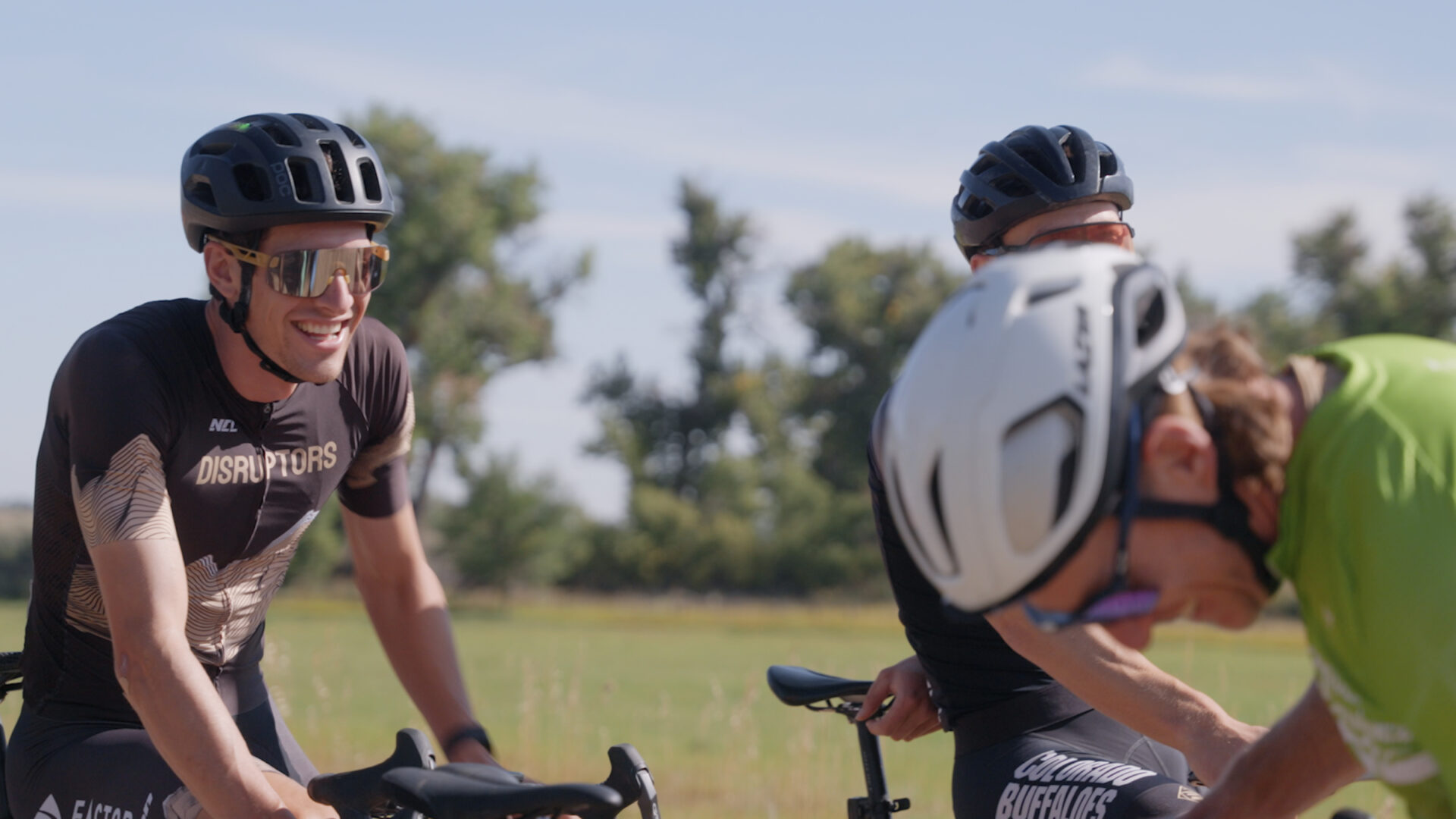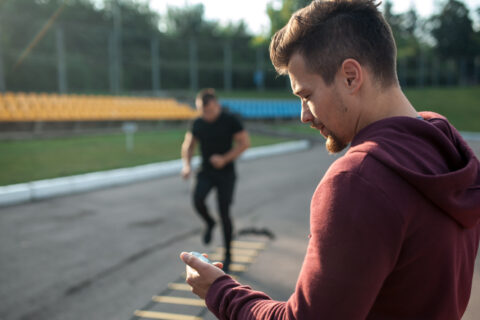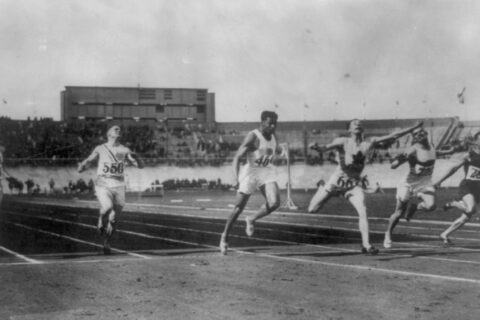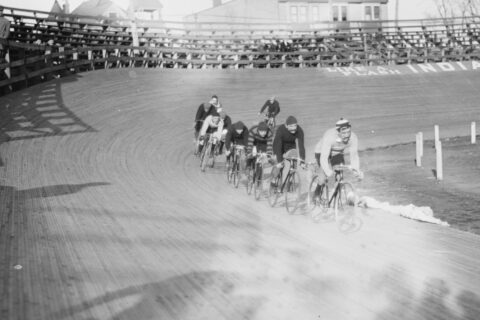Across a decades-long career, Katerina Nash, 43, competed in two winter Olympic Games in cross-country skiing, three summer Olympic Games in mountain biking, and won several World Cup races in cyclocross. The depth, scope, and longevity of her athletic experience is among the largest in the world.
Throughout her career and across multiple sports, she’s worked with several different coaches, in a variety of settings: She’s worked with a team of coaches on the Czech National ski team; she’s worked one-on-one with longtime CTS coach Dean Golich for her cycling pursuits.
Her experiences help illustrate the many ways any athlete can work with a coach, and how the athlete plays a critical role in optimizing that relationship.
In Nash’s case, much of her athletic progression, as well as the improvements in her relationships with coaches, was directly attributable to her evolution as an athlete.
“Through these experiences, I have benefited from the knowledge of others,” Nash says. “It allowed me to focus my energy where I needed to, by trusting the guidance versus expending energy questioning my own decisions. But now, having worked with various coaches over so many years, I have the tools to make my own training decisions.”
When Nash was on the Czech National ski team, the coach-athlete relationship was less collaborative. “This is the plan, and I did it,” Nash says. “In skiing, it was a group environment, and skiing was not as scientific. Coaches were onsite and more hands-on.”
As the practice of coaching has evolved, it has scaled. New technology is increasingly employed to monitor and reach more clients. “Online coaching requires more feedback, which can feel like more work,” Nash says. “But the numbers and data only tell a little bit of the story, and the athlete’s consistent feedback is essential to fill in all of the other vital details.”
[For more on the coach-athlete relationship, check out Fast Talk episode 61: Do You Need a Coach? With Neal Henderson and Rebecca Rusch]
The differences between personal coaches and templated training plans
The endurance sporting scene has been experiencing explosive growth since the 1990s. The associated services, like coaching and training, have tagged along for the ride, growing exponentially. But there’s a problem: There are no standards or criteria to become a coach. Anyone can call themselves a coach and start working with clients or athletes. Endurance coaches are a dime a dozen.
Furthermore, with a few clicks of a mouse, you can find countless templated and automated training solutions online. Some of these provide a la carte workouts, while others offer static 12-24-week training plans, typically focused on helping customers prepare for a specific event.
If an athlete selects the a la carte workout menu, they typically plug and play—which in many cases means they simply follow what the PDF or email tells them to do.
However, it’s critical to note that effective training is a function of proper sequencing and synchronizing of workouts, as well as building in appropriate rest.
Tim Cusick, who has coached multi-time world champions Amber Neben and Rebecca Rusch, among many others, feels like this is where the static plans collapse. “When an athlete is indiscriminately cherry-picking workouts, it is a point of failure,” he says.
Without a method or system to guide the sequencing, this type of training often leads to failure or disappointment in some form or another. These can include plateaus in fitness, overreaching, illness, overuse injury, or mental burnout.
The four- to six-month static plan is problematic in that it doesn’t adapt to the individual in terms of how they emotionally and physically tolerate the load. Individualization is a core principle of effective training. The static plan also fails to adapt to the individual’s life schedule. What does the athlete do if they get sick, family situations arise, or work gets in the way?
Often, due to life circumstances, athletes miss workouts. Without guidance on how to adapt and juggle the training plan, the athlete may get discouraged—one missed day leads to multiple missed days. Worse, they may quit. Conversely, but just as problematic, they try to make up in one or two days for the training they missed over five days, which may lead to illness, injury, or mental burnout.
Many of my clients find me after having tried the templated digital training solution. These are typically busy professionals with families and finite training time, who are trying to juggle and balance it all. One such athlete opted for the a la carte approach. Without a guide or mentor to help him keep balance, his training method quickly became one driven by the mentality: If a little is good, more must be better.
He drove himself hard with a lot of sweetspot training and dug himself into a deep hole. I helped him climb out of it, with more balanced, method-based training.
Additionally, digital training solutions can’t provide the human touch when it comes to emotional support and helping the athlete develop mental strategies, tactics, and technical skills. These are critical components of a successful performance; it’s not just about riding your bike more and hitting a power number.
To put a point on this, even after all she’s learned from working with some of the best coaches in the world, Nash is critical of the online training plan.
“I have never gone this route of exclusively working on my own with one of these online solutions,” Nash says. “I find the ability to talk to a real coach, ask questions, and get reassurance when I need it to be invaluable to the process. Also, Dean [Golich’s] knowledge and ability to fine-tune and adapt the training plan to me, and systematically sequence the workouts over the week, helped me get the most out of my training time.”
After so many years of training and racing, Nash has learned that she can’t keep doing things the same way; she must evolve. For example, she doesn’t recover as fast as she once did; she can’t push herself in training as often.
“Working in collaboration with Dean, we take into consideration that the body changes over the years and identify what we need to change in order to continue to work on my weaknesses and maximize my strengths,” she says. “At the end of a season, we always evaluate the season, in order to re-evaluate the training plan.”
At some point, the pure science evolves into strategy to stay on an upward trajectory.
What makes a good coach?
A good coach has extensive knowledge and experience that equips him or her with a command of training methods to develop tailored plans to each individual athlete. A good coach does not default to the one-size-fits-all method. In fact, under the guidance of a good coach, training becomes a delicate balance of art and science.
“I value experience and credibility in a coach,” Nash says. “Dean has always had the ability to answer my questions about training and help me better understand why I am doing certain workouts. If Dean does not have an answer to my question, he goes off and researches the question, digs deep into the science and comes back to me with an answer. If a coach cannot or is not willing to answer the athlete’s questions and provide explanations, this is a red flag.”
In Nash’s experience, some coaches try to wear too many hats, attempting to serve as an athlete’s nutritionist, psychologist, physical therapist, as well as coach. But a good coach should not try to be all things to all people, and should, instead, focus on doing what he or she does well.
An experienced, wise coach will, however, leverage his or her experience and relationships to create a network of specialists to refer clients to, if and when it’s required. This provides the athlete with a team of experts, including sport psychologists, nutritionists, and physical therapists.
There are lots of ways for an athlete to get from point A to B. But a good coach has a command of the training concepts and develops and implements a plan that might use a variety of methods and workouts to most effectively help the athlete tap into his or her potential.
The key is understanding what drives the coach’s decision-making and the reasoning behind those decisions. It bears no resemblance to indiscriminately copying textbook concepts into a training plan.
“A good coach sincerely listens, and understands all aspects of my life, is receptive to my feedback, and understands my goals,” Nash says.
In order to best inform the decision-making process around training, the coach must take time and interest to understand the individual athlete. The key questions include:
- What are the athlete’s limiters and strengths?
- What are the athlete’s life demands and priorities, including work, school, and family?
- Is the athlete data driven, or not?
- What are the specific demands of the athlete’s goal events?
- Finally, it’s valuable for a coach to understand why the athlete does it? What motivates them and how are they motivated?
In developing the training plan, the coach is considering all of these factors. And when making training decisions, the coach is asking how this specific workout directly helps this athlete improve limiters or maximize strengths and/or meet the demands of the race.
A good coach helps filter the ubiquitous and copious amount of information and opinion. We are bombarded by training information from an increasingly larger number of sources often espousing different philosophies, which can sometimes seem contradictory; this can often lead to confusion.
It’s important that a coach reminds the athlete that training is a process that demands consistent investment over time; there are no short-cuts or immediate results. The key is to help the athlete love the process and to see every workout as an opportunity for self-challenge, growth, and improvement.
“I definitely believe in trying different things, but if an athlete decides to be self-coached, they need to take a deep dive into the science and understand the process behind the training,” Nash says. “On the surface there are so many different ways to train, it can be overwhelming and confusing. But not everyone has the time or interest to study the science. For those with finite time, it’s nice to have access to experts that you trust and have confidence in, to sequence workouts and develop training.”
Most of my clients are busy professionals with families, or they’re U23 athletes with finite time and ever-changing life schedules. When life gets chaotic, a coach helps the athlete maintain consistency and flexes and adjusts the training to accommodate for life.
Since so many endurance athletes are type As, and when life gets in the way of training and their TrainingPeaks calendar starts to become more and more red (indicating the workouts and rides didn’t go according to plan), it adds more stress to an already stressful life.
The coach’s ability to adjust the training on the fly helps ensure sustained training. This helps maintain a healthy balance between work-family commitments and training. Training should be a positive outlet and not seem like another overwhelming and stressful job.
What makes a good training plan?
A good training plan is balanced and comprehensive. In addition to cycling-specific workouts, it includes consistent off-bike stability, mobility, and strength exercises, critical components to durability, resiliency, and optimal performance.
However, for the busy individual with finite training time, trying to consistently fit these components into a busy week can start to feel overwhelming and impossible. A good coach can effectively and efficiently fit these essential components into a week in a realistic and manageable fashion.
The coach also helps remind the athlete that every workout should be maximized to hone all aspects of performance—these would include mental conditioning as well as fueling strategies.
Finally, one of the greatest values a coach brings to the relationship is their ability to help the athlete be as diligent about rest and recovery as they are at hitting the hard workouts. Rest is the hardest part of training for most athletes, yet improved fitness follows a simple formula:
Fitness = Training Stress + Rest.
A good coach stays on their athletes to train hard and rest hard, and constantly reminds them that rest is a critical component to training.
The coachable athlete
Every relationship has two players. We’ve dissected what a good coach brings to the equation, but often the attitude and approach of the athlete is overlooked. However, there are myriad things an athlete can do to improve their prospects of a successful partnership.
“If you are hiring a coach, it is all on you,” Nash says. “A coach is just another tool, but at the end of day it’s on you to do the work and do it well—with intention and purpose.”
An athlete must have a clear reason as to why they are doing what they do, and why it is meaningful and important to them. When an athlete can be more intrinsically motivated, they tend to adopt a growth mindset, seeing every workout and race as an opportunity to learn and improve. The athlete also needs to be coachable, interested in learning and receptive to trying new things.
“One problem I see with some coach-athlete relationships is that the athlete enters into the relationship with strong preconceived opinions and is not open to new ideas, and ultimately is not coachable,” Nash says.
Communication is a two-way street. While the coach has many skills, he or she is not a mind-reader, so the athlete needs to be open and honest in terms of what is working and what is not working. A good coach makes the athlete feel at ease and emphasizes that it is a collaborative effort and the training plan’s success hinges on the athlete’s honest, consistent feedback.
The coach needs to emphasize to the athlete that training is not about trying to impress or not disappoint the coach.
“About two years ago I approached Dean [Golich] as I felt I needed to change some things in training to continue to improve and take a step up in performance,” Nash says. “Dean listened and acted on my feedback.” The pair tweaked some things in training based on her feedback, and Nash started experiencing new breakthroughs in her fitness and performance and started winning World Cup cyclocross races.
Finally, it’s important that the athlete is realistic—not every workout and race will go well. A coach can help the athlete keep the bad days in perspective, learn from them if there is something to learn from them, or simply let them go, and continue to focus forward. This is where the athlete’s trust and confidence in the coach is key—it helps the athlete stay calm and stay the course.
What are the ingredients of a good coach-athlete relationship?
An effective coach-athlete relationship is a partnership, not a dictatorship, and collaboration is central to the success of the training plan and the athlete. And just like any other healthy relationship it is fed by consistent, honest communication, and grounded in trust and mutual respect. (Conversely, the athlete who downloads the templated plan lacks that pushback and the external perspective of a coach.)
“Developing a relationship and trust in that relationship is key,” Nash says. “And there needs to be a clear understanding of expectations on both sides. For example, the athlete has to have realistic expectations. An athlete can’t expect if they hire a coach, they will go from a Cat. 5 to a world champion. The athlete has to be realistic about their potential, talents, and abilities. And the coach needs to be clear and honest on what he or she can deliver.”
To develop trust, the athlete must have confidence in the coach’s ability and the coach must empower the athlete with the understanding of why they are doing the workouts and how it relates and builds toward achieving their goal. As one of the most successful coaches of all-time, John Wooden, said, “A good coach is an educator.”
Educating that athlete on the “why” of training can help motivate the athlete to get more out of each training session. This understanding helps the athlete connect the dots and motivates more purposeful training.
“Trusting what your coach is doing with training is key, but also having the ability and confidence to question your coach and ask why you are doing what you are doing in training is of equal importance,” Nash says. “There has to be a collaboration for the relationship to work well. You can‘t question everything. But you need to feel that you can provide feedback and discuss concerns if you have them.”




